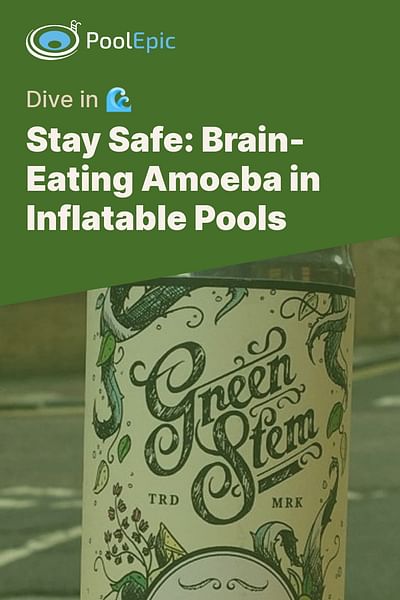An avid lover of the outdoors, Francesca Hodkiewicz has made a name for herself as an expert in water-based activities and products. Over the past ten years, she has immersed herself in the world of inflatable pools, exploring everything from compact kiddie pools to expansive family-sized options. Her practical experience, combined with her detailed research, positions her as a reliable resource for advice on inflatable pools.
While inflatable pools are a fantastic way to cool off in the summer heat, they do pose a few risks, one of which is the potential presence of a brain-eating amoeba. This amoeba, scientifically known as Naegleria fowleri, is a microscopic organism that thrives in warm, freshwater environments. Although it's rare, it can cause a severe and often fatal brain infection when it enters the body through the nose.
Unmasking the Mystery: Brain-Eating Amoeba in Your Pool 🏊
Naegleria fowleri is found in warm bodies of freshwater such as hot springs, lakes, and rivers. It can also survive in poorly maintained pools, particularly those without proper chlorination. Various types of aquatic life can be found in pools, and this includes harmful organisms like the brain-eating amoeba.
Ideal Chlorine Levels for Safe Inflatable Pool Water
Despite its terrifying name, it's important to note that infection from this amoeba is extremely rare. According to the Centers for Disease Control and Prevention (CDC), only 34 infections were reported in the U.S. between 2009 and 2018. However, the fatality rate is over 97%, making it a serious concern.
Inflatable Pools: Fun in the Sun or a Risky Dip? ☀️🏖️
Inflatable pools, especially smaller ones, are often overlooked in terms of maintenance and water quality. Their small size may make it seem unnecessary to treat the water with the same level of care as larger pools. This neglect can create an environment conducive to the growth of harmful organisms, including Naegleria fowleri.
Moreover, inflatable pools are often filled with tap water, which is typically safe from the amoeba. However, if the water is left untreated in the pool for a long time, especially in warm weather, it can become a breeding ground for various microbes.
Stay Safe: How to Prevent Amoeba in Your Inflatable Pool 🏊♀️🛡️
The good news is, there are steps you can take to minimize the risk of brain-eating amoeba in your inflatable pool. The key lies in proper water treatment and pool maintenance. Here are some essential tips:
- Chlorinate the water: Chlorine is effective in killing many types of bacteria and parasites, including Naegleria fowleri. Make sure your pool water has a free chlorine level of 1–3 parts per million and a pH level of 7.2–7.8.
- Change the water regularly: Don't let water sit in the pool for long periods. Regularly change the water, especially if the pool is used frequently or left uncovered.
- Proper pool cleaning: Regularly clean the pool, even if it's not being used. Cleaning an inflatable swimming pool involves more than just changing the water. The pool's interior should be scrubbed to remove any potential biofilm where amoebas might hide.
Remember, the risk of getting an infection from a brain-eating amoeba is very low. However, it's always better to be safe than sorry. By maintaining your inflatable pool properly, you can ensure a safe and enjoyable swimming experience for everyone.
Maintaining Water Quality in Inflatable Pools
Test your knowledge about the risks of brain-eating amoeba in inflatable pools and how to maintain water quality.
Learn more about 🏊♀️ Test Your Knowledge: Maintaining Water Quality in Inflatable Pools 🌊 or discover other Pool Epic quizzes.















